Pallet Racking
Your choice of pallet racking system can make an enormous difference to the productivity and profitability of your warehouse.The type of pallet racking you choose doesn’t only influence the amount you can store. It determines how fast you can load. How fast you can pick. How fast you can get to the back of the racks. And how fast you can fulfil orders.
Your Doncaster pallet racking system matters, which is why it’s vital to make the right choice.
Rack-Master can help you choose the right system for your business and your budget, and take you through the entire process from site survey to installation, simply.
What are my pallet racking options?
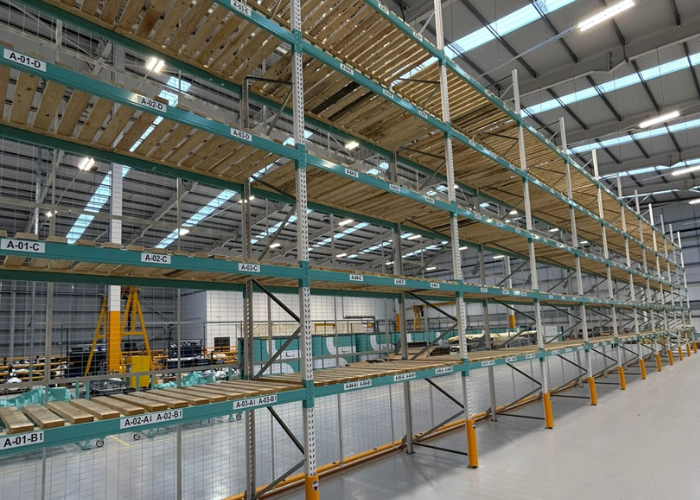
Wide Aisle Pallet Racking
This is industry’s ‘go-to’ pallet racking system. it uses 2.8M –3.5M aisles, which means any standard forklift should be able to navigate the aisles and access any pallet at any time. With an articulated forklift truck, you’ll be able to narrow the aisles to as narrow as 1.8M, so you can pack more aisles into your warehouse and store more products.

Narrow Aisle Pallet Racking
The system operates exactly the same as wide aisle racking but, as the name suggests, it squeezes the aisle widths. With just 1.4M – 1.6M of space between racks you’ll be able to store far more product on more racks. You will, however, need narrow aisle (NA) or very narrow aisle (VNA) trucks to fit between the lanes. You’ll also want to install angled guiderails or wire guidance systems to protect the racks.
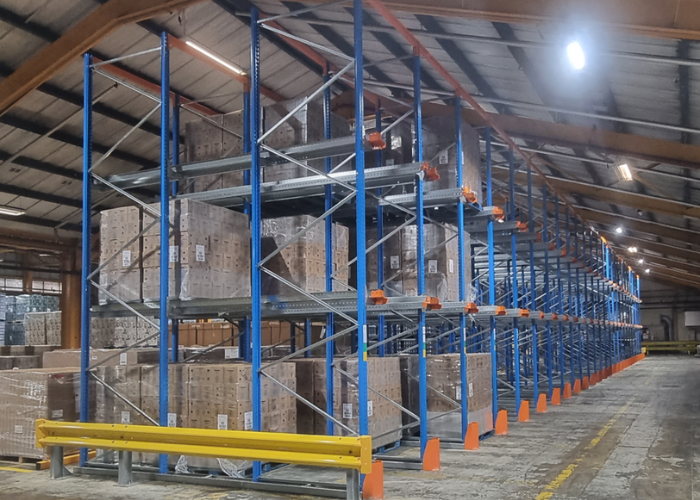
Drive-In Pallet Racking
This system packs in the highest density of pallet storage without block-stacking pallets, using a standard forklift which locates pallets onto cantilevered rails.
‘First in – last out’ (FI-LO) selection means this is the ideal option when you store lots of similar items (ideally without expiration dates) and/or where space is tight.
It’s not the ideal option if you often need to reach pallets at the back of a lane.
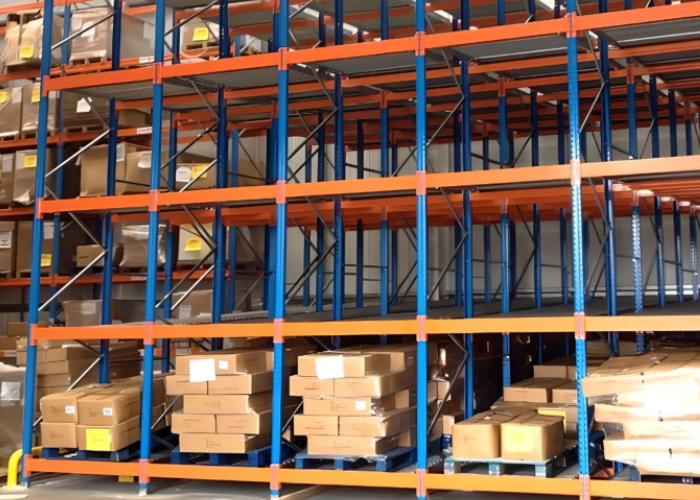
Pallet-Live Storage
This system operates with two separate faces: one for loading and another for unloading. This creates a ‘first in – first out’ (FI-FO) scenario which makes it ideal for products requiring heavy rotation. It’s also a good option for high density storage without block stacking pallets.

Push-Back Pallet Racking
Another high-density storage option without block stacking. The FI-LO system uses one loading face and another for offloading but (unlike drive-in) it can be off-loaded by level rather than by having to empty a full lane. It may be a good option where you need to balance easy access to goods with space maximisation, providing you don’t need to stack pallets more than four deep.
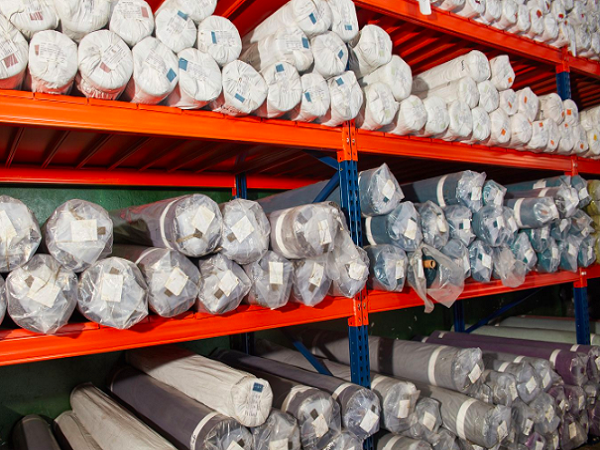
Carpet Racking
Carpets and other rolled products need support along their length to prevent sagging and distortion. We achieve this with (typically) 4m deep back-to-back racks, to which we add a chipboard base to avoid snags and protect products.
Pick the rolls using a counterbalance forklift with boom attachment.
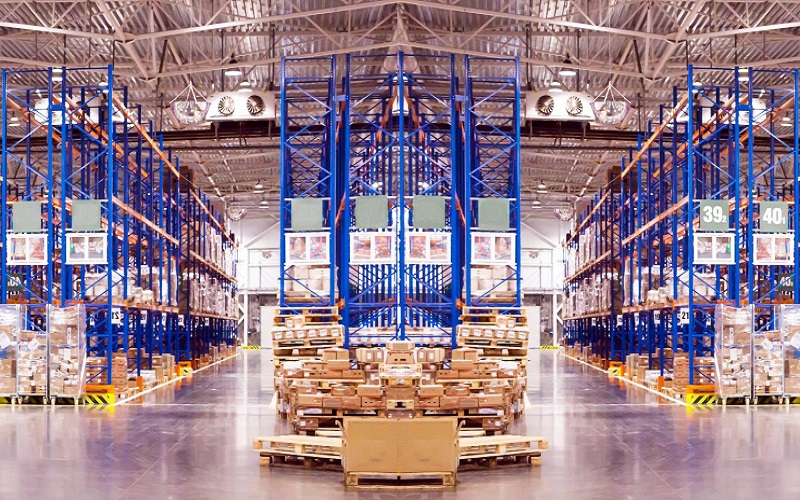
Double-Deep Pallet Racking
Like wide aisle pallet racking, but this system places two standard bays double deep or back-to-back, which means you can significantly increase storage capacity. A good option providing you don’t often need to reach the rear of the double racks (because that can slow the picking process). You’ll also need to add telescopic forks to your forklifts to ensure they have the required reach.
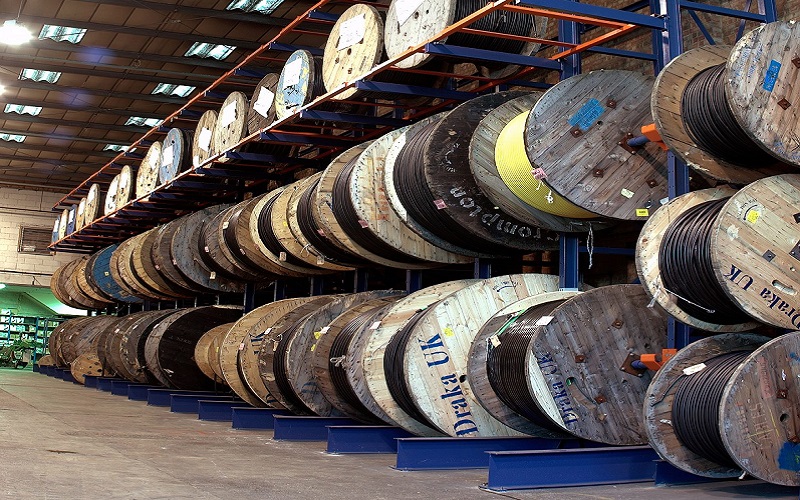
Coil Racking
How you store coils in your Doncaster pallet racking system depends on whether you need the coil to be usable from its stored position.
Where the racking is purely for storage, choose ‘eye to the sky’ (hole facing upwards) or a coil cradle.
Where you need to use the material on the coil from its stored position, choose a coil spindle, which enables the coil to rotate in situ.
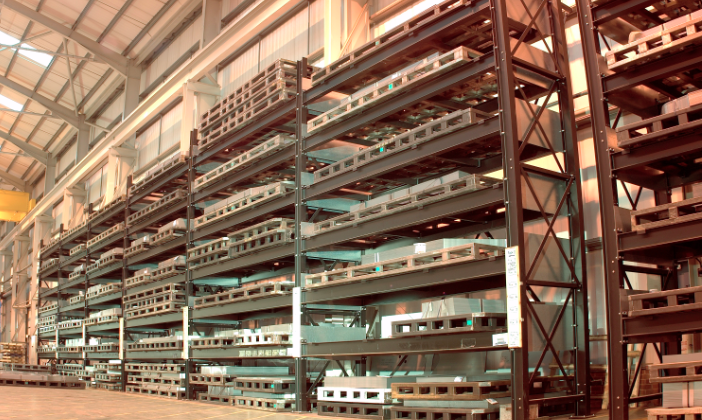
Heavy Duty Pallet Racking
A wide aisle pallet racking system with extra load-bearing capability thanks to the structural U-beams used in its construction. The natural choice for bay loadings of 20,000+kgs or loads of more than 4,000kgs per level.

Shuttle Racking
Shares much in common with other Doncaster pallet racking installations in this list, but the crucial difference is that this is the only one where the forklift never enters the lane. Instead, a shuttle device, which runs beneath each pallet lane, collects pallets and brings them to the front or rear of the pick face depending on whether you wish to operate a FI-FO or FI-LO system. The higher the throughput of the system, the more shuttle devices you’ll have running at any one time.
Find out more about our Doncaster pallet racking systems.
Talk to Rack-Master
Make your Doncaster warehouse racking more productive and more profitable.
Talk to us to discuss design options and arrange your free site survey.
Contact Us
Complete the form below and one of our team will be in touch.
